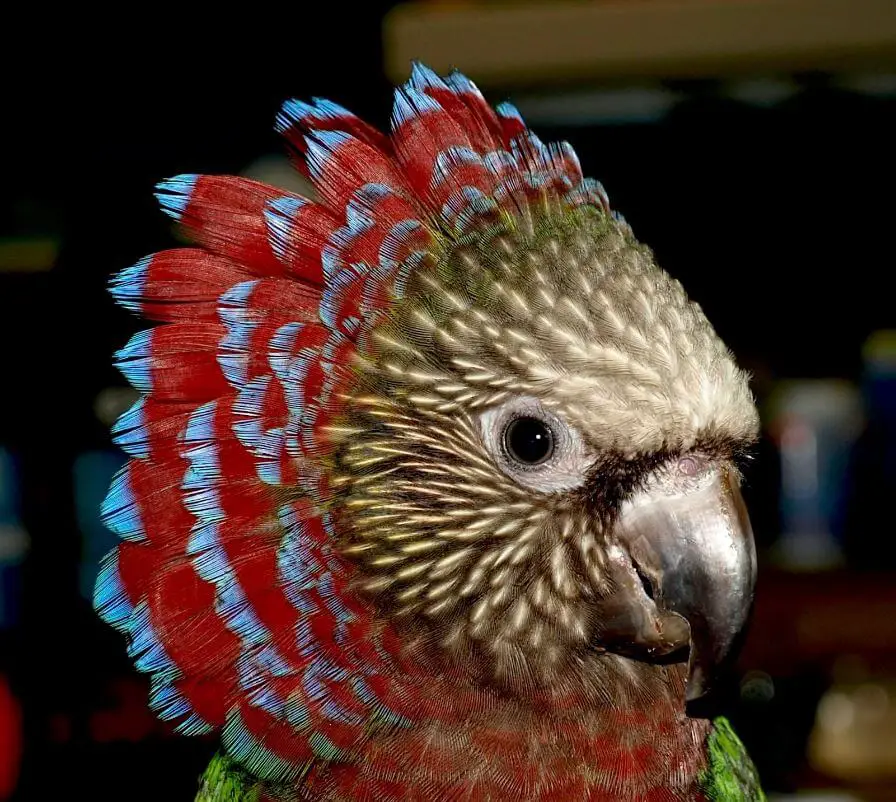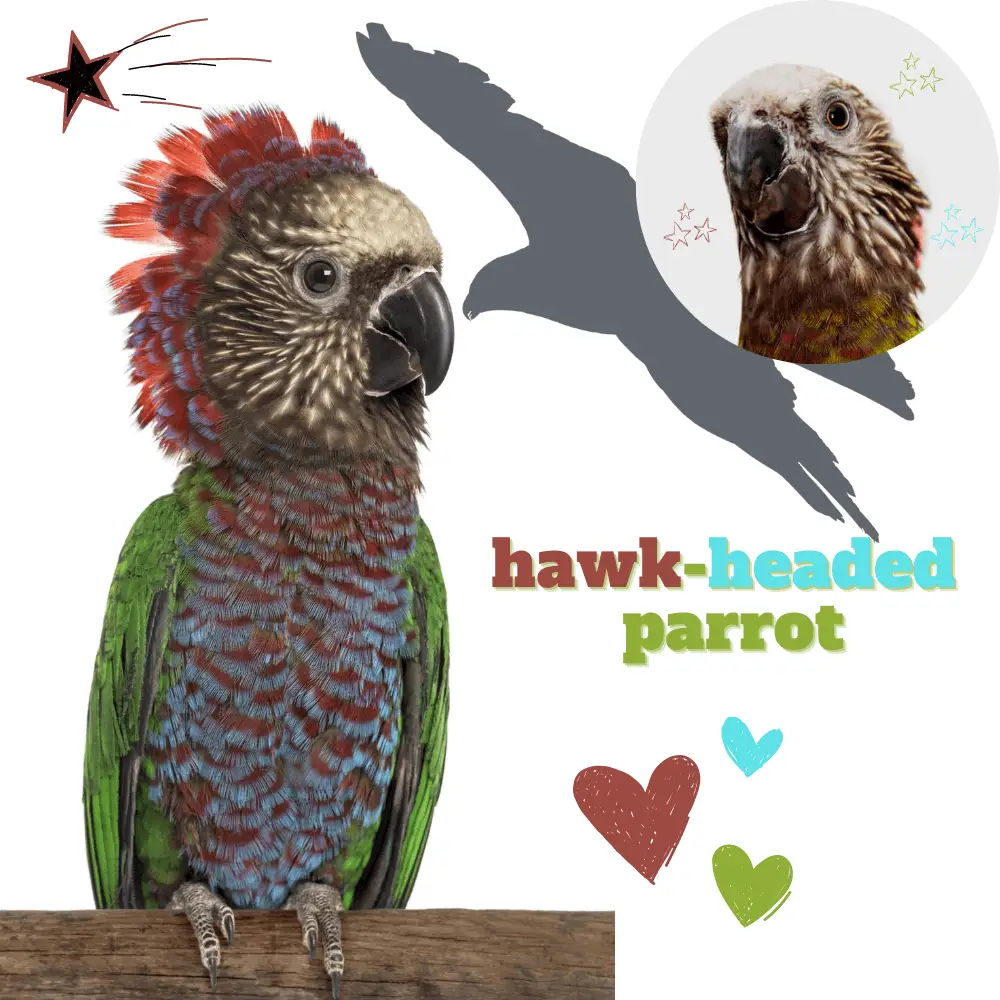The hawk-headed parrot, also known as the red-fanned parrot, has a gray-white crown with white streaks on the top and sides of its head.
The feathers around its neck and along its chest are mostly red with blue tips. Its back is a beautiful green and the tail is green and blue.
The most notable feature of this bird is that when excited, it erects its neck feathers in a beautiful display resembling an Indian headdress.
A well-socialized and hand-fed falcon head will make an excellent pet. Many owners call themselves intelligent, playful, and affectionate. Many companion parrots have a good vocabulary.
They are very similar to the parrot conure in the way they play. They love to hang upside down to play with their toys. They will entertain you and themselves for hours with their crazy antics
Behavior of hawks
A hawk-headed parrot that is gently trained and given loving attention from the owner is likely to be a well-behaved companion parrot. That said, it’s still only recommended for experienced parrot owners.
They need an experienced and patient human companion who can read the body language of birds. A parrot hawk can be gentle and calm one minute and upset and aggressive the next.
Hawk headed parrot breeding

The hawk-headed parrot is stubborn and strong-willed. You need to be kindly firm while training these characters.
They tend to pinch those they like and bite hard at those they don’t trust or aren’t sensitive to their mood.
So if you care about their desires rather than your own, you will avoid developing a negative relationship.
A bird that is not fed properly and not getting enough sleep will have behavioral problems. Make sure they get 11-14 hours of sleep in a dark, quiet room, along with a healthy diet.
Boredom is another reason for a screeching bird. Provide lots of toys and spend quality time with your bird. Some like wood they can craft into shards and others like bells and chipping gear. Some love everything.
Make sure they are housed in a large enough cage with plenty of toys. A bored parrot can develop terrible behavior problems.
They can be extremely loud when excited. Some of their vocalizations are piercing and often repeated. They also have quiet sounds and many learn a few words as young as two months old.
Another factor to consider is boredom. You need to provide plenty of toys for your parrot to attack and also destroy. We have toys at competitive prices on our Parrot Bird Toy page.
How much do hawks eat?

Hawk-headed parrots should be offered a variety of healthy foods. You will need to provide at least 20 to 40 percent of your feed with premium pellets.
We love Totally Organics Pellets because they’re 100% organic and don’t even contain artificial vitamins.
The remaining 60 to 80 percent of their diet should consist of colorful fresh or dehydrated vegetables, a mix of seeds with beans, rice, and some fruit, again preferably organic.
Cage Requirements
The hawk-headed parrot needs room to climb and play. They also need lots and lots of toys and they need to be turned so they don’t get bored.
They need a large cage the size of a macaw or cockatoo with bar spacing of an inch or less. The cage should measure at least 36x24x50.
Consider setting up a cage with a playpen on top so your hawk-headed parrot can play when you’re home. The more space they have, the happier they will be.
Some will argue with me and say they should be in a small cage so they are happy to come out and play with you. We have not found this to be a problem with our birds.
Cages for veterinary visits and outings
You need to consider the type of carrier you will use to transport your hawk-headed parrot. You never know if you might break down or if you decide to take your parrot with you on a trip. Buy a comfortable cage for these occasions.
Hawk headed parrot talking
SOURce: Casuarina Parrot Gardens

